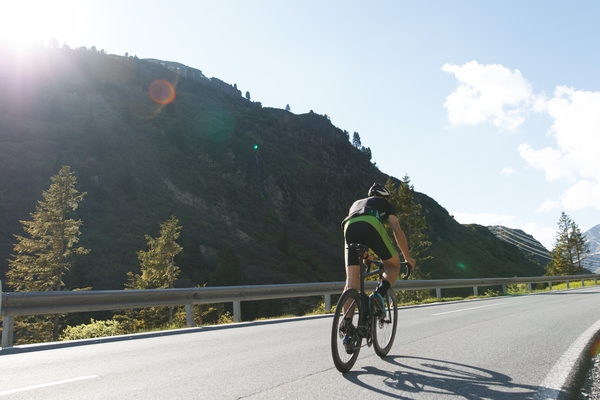You need to make sure that your iron friend is in perfect technical order for the road in India
That is why it is important to know a few things before using a bike, which will save you from many problems in the future and eliminate the need to go to a bike shop. Any bicycle requires careful attitude, attentive and constant care. Especially carefully, you need to check the tightening of all screws and nuts, the operation of bearings, the tension of the spokes, and the condition of the brakes.

How to take care of riding a bike in India?
If you want your vehicle to serve you faithfully for many years, you need to properly care for it. In addition to the mandatory seasonal maintenance, it is advisable to clean the vehicle after each ride. It is especially important in India to wash off dirt and moisture in rainy or muddy weather. The chain requires special attention – theoretically it needs to be lubricated every 15 hours of driving or after 250-300 kilometers. This must be done with a liquid lubricant, preferably specially designed for this purpose.
Use your riding bike properly and it will serve you well
It is important to remember the rules of gear shifting – this is one of the most important conditions for a long and “problem-free” life of your vehicle. This should be done smoothly and consistently, but the main thing is only while moving. In all other positions, the chain may fly off, get stuck between the sprockets, or even break. When shifting gears, do not press hard on the pedals, but slowly scroll without strong pressure.
If you do not want to be left without a chain, do not allow it to be large distortions, that is, a contrasting combination of large and small stars. The more “parallel” the chain is to the frame, the better for your vehicle, and for your body too. It is not recommended to switch to several values at once, it is better to do this in stages, each time making sure that the chain has moved and taken the desired position.
Myself a bike mechanic
Before you start riding your bike, it will not be superfluous to learn some simple skills that will help you if you need minor repairs. At a minimum, you should be able to remove the front wheel. This may be necessary when transporting the bike, for example, on an airplane. This will be helpful if you broke down somewhere in India. Always remember that you must not press the hydraulic disc brake lever while doing this, as the pads can get too close together and have to be spread with improvised objects. When transporting the bike in this position, install special spacers between the pads.

You may also need the following skills: replacement and emergency repair of the camera, installation of screeds in case of breakdowns on the go, competent use of a repair kit, etc.
Setup and subtleties of operation in India
The steering wheel of the new riding bike also requires fine tuning for height and weight characteristics. In many modern bicycles, this is not difficult to do, the set of adjustment parameters is not too large. With “outstanding anthropometry”, when the height is about two meters and above, it is still better to contact a specialized bicycle workshop. On most modern bikes, be it mountain or road, the handlebars are attached in the so-called “threadless” way – with the help of bolts to the fork stem.
The most effective method of understanding exactly what handlebar height to set is practice – for this you need to test the bike in various riding modes. This will allow you to find the “arithmetic mean” between the comfort, maneuverability and handling of the bike. For the most optimal result, you can find a video with steering wheel settings for your bike model.
Bike setup before riding in India
The next important aspect is tire pressure. Experts recommend that the first thing to look at is the label, with which the manufacturer reports the recommended values. The average pressure is considered to be between 2.5 and 4.5 BAR (40-65 PSI) – this guarantees long trouble-free operation. It is important to remember that higher values are recommended for expensive and high quality bicycle tires. In the future, when the cyclist gains experience, it is imperative to vary the pressure depending on the type of riding, since asphalt, highway, country dirt or off-road dictate different requirements.
And the last point that a novice cyclist in India needs to know is shock absorber adjustment. They, as you know, are front or rear, and consist of a damper and springs (springs). Most bikes come with a suspension fork in the front, but adjusting the rear fork (if equipped) doesn’t make much of a difference. The selection of the optimal characteristics of the fork involves a certain compromise between high stiffness, which makes the ride not very comfortable, and low stiffness, which leads to “jumps” and even breaking through a large obstacle.
This parameter should be adjusted according to the prevailing riding conditions, starting with maximum rigidity on smooth asphalt of the highway, ending with a soft ride on the road, with its pits, stones and other surprises. The same principle applies to seatpost adjustment, which must be adjusted to the weight of those who ride.
How to choose a riding bike size for India
There is an old grandfather way, and it is usually the best: standing with a bicycle with a frame between your legs on a flat surface, you should be able to sit down on the width of your hand (7-10 cm). In addition, there is an approximate selection table that is large in height. Frame measurements are standard in inches and height in centimeters. Check this out in India.
Don’t forget about the guarantee
Be sure to ask about the warranty period for the frame and components of the riding bike. It also does not hurt to find out if the seller has his own warranty workshop. When buying a riding bike in India, make sure that the warranty card is filled out correctly and legibly. And, of course, take care of yourself!